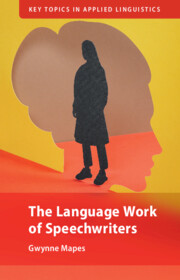Refine search
Actions for selected content:
204 results
Precious Goods
-
- Journal:
- Utilitas , First View
- Published online by Cambridge University Press:
- 09 December 2025, pp. 1-15
-
- Article
-
- You have access
- Open access
- HTML
- Export citation
Real and Nominal Prices in Smith
-
- Journal:
- Social Philosophy and Policy / Volume 42 / Issue 2 / Winter 2025
- Published online by Cambridge University Press:
- 16 December 2025, pp. 416-433
- Print publication:
- Winter 2025
-
- Article
- Export citation
Chapter 6 - Money as Moral Calculus
- from Part II - Ethnography
-
- Book:
- Shapes in Revolution
- Published online:
- 07 November 2025
- Print publication:
- 20 November 2025, pp 170-206
-
- Chapter
- Export citation

The Language Work of Speechwriters
-
- Published online:
- 31 October 2025
- Print publication:
- 14 August 2025
Chapter 22 - Neural Mechanisms of Arbitration between Multiple Experts in Value-Based Decision-Making
- from Section V - Cognition–Emotion Interactions
-
-
- Book:
- The Cambridge Handbook of Human Affective Neuroscience
- Published online:
- 16 September 2025
- Print publication:
- 02 October 2025, pp 444-463
-
- Chapter
- Export citation
8 - The Allegory of the Diamond
- from Part IV - Pathways Forward
-
- Book:
- AI versus IP
- Published online:
- 09 August 2025
- Print publication:
- 28 August 2025, pp 113-114
-
- Chapter
- Export citation
Chapter 7 - Plato
-
- Book:
- Aggregation and Antithesis in Ancient Greece
- Published online:
- 21 October 2025
- Print publication:
- 28 August 2025, pp 173-190
-
- Chapter
- Export citation
1 - Introduction
-
- Book:
- The Language Work of Speechwriters
- Published online:
- 31 October 2025
- Print publication:
- 14 August 2025, pp 1-35
-
- Chapter
- Export citation
2 - Parameters of Professionalism
-
- Book:
- The Language Work of Speechwriters
- Published online:
- 31 October 2025
- Print publication:
- 14 August 2025, pp 36-71
-
- Chapter
- Export citation
5 - Virtue, Transgression, and Value
-
- Book:
- The Language Work of Speechwriters
- Published online:
- 31 October 2025
- Print publication:
- 14 August 2025, pp 134-161
-
- Chapter
- Export citation
6 - Reappraising Language Work
-
- Book:
- The Language Work of Speechwriters
- Published online:
- 31 October 2025
- Print publication:
- 14 August 2025, pp 162-182
-
- Chapter
- Export citation
4 - Craft, Creativity, and Distinction
-
- Book:
- The Language Work of Speechwriters
- Published online:
- 31 October 2025
- Print publication:
- 14 August 2025, pp 108-133
-
- Chapter
- Export citation
3 - Invisibility, Materiality, and Erasure
-
- Book:
- The Language Work of Speechwriters
- Published online:
- 31 October 2025
- Print publication:
- 14 August 2025, pp 72-107
-
- Chapter
- Export citation
Chapter 7 - The Economy in the Feyerabend Lecture Notes on Natural Right
-
-
- Book:
- Kant's Lectures on Political Philosophy
- Published online:
- 18 July 2025
- Print publication:
- 07 August 2025, pp 122-141
-
- Chapter
- Export citation
Chapter 11 - The Natural Preconditions of Political Freedom
- from Part V - Reconciling between Freedom, External Authority, and Nature
-
-
- Book:
- Platonic Autonomy
- Published online:
- 07 August 2025
- Print publication:
- 31 July 2025, pp 235-255
-
- Chapter
- Export citation
6 - Defending Oracy
- from Part I - Debating Oracy in the UK
-
-
- Book:
- Oracy
- Published online:
- 23 September 2025
- Print publication:
- 31 July 2025, pp 77-90
-
- Chapter
- Export citation
The Public Role of the Humanities: From the Student Perspective
- Part of
-
- Journal:
- Public Humanities / Volume 1 / 2025
- Published online by Cambridge University Press:
- 04 July 2025, e112
-
- Article
-
- You have access
- Open access
- HTML
- Export citation
After Exploratory Geology: Gemological El Dorado in Global Afghanistan
-
- Journal:
- Comparative Studies in Society and History / Volume 67 / Issue 3 / July 2025
- Published online by Cambridge University Press:
- 15 May 2025, pp. 680-706
-
- Article
-
- You have access
- Open access
- HTML
- Export citation
Chapter 3 - Affect-Caused Action
-
- Book:
- Explaining our Actions
- Published online:
- 17 April 2025
- Print publication:
- 08 May 2025, pp 46-69
-
- Chapter
- Export citation

Explaining our Actions
- A Critique of Common-Sense Theorizing
-
- Published online:
- 17 April 2025
- Print publication:
- 08 May 2025
